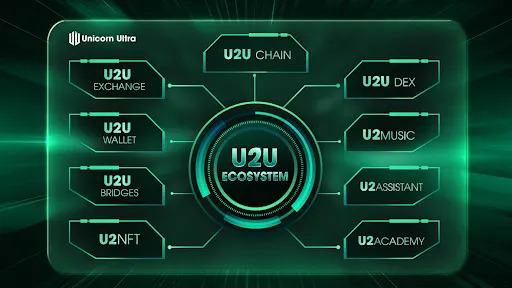What is Chainlink VRF and how does it work?

Blockchain technology has spawned many applications in recent years, the most popular being cryptocurrencies. It has also made it possible to create many decentralized, secure and transparent marketplaces in the digital economy.
Offering far more trust since all transactions are immutably recorded on the blockchain, this technology has been well complemented by the smart contract feature popularized by Ethereum. Decentralized applications (DApps) based on blockchains like Ethereum are disrupting traditional businesses like retail banking and even introducing use cases never considered possible.
Extend the possibility of smart contracts with oracles
But for the Ethereum blockchain to support the development of DApps that go beyond simply facilitating transactions, they need to interact with the external or off-chain world and integrate incoming data into smart contracts, which is where blockchain oracle technology comes into play , and empowers smart contracts by connecting them to real-world data, events and transactions. Now, many types of third-party services are available, such as inbound, outbound, software and hardware oracles, further expanding the number of real-world applications that blockchain protocols can power.
Consensus-based oracle networks such as the Chainlink protocol provide end-to-end decentralization, which is key to securing the entire blockchain ecosystem in which they operate. In addition, these oracles enhance smart contracts’ performance, functionality, and interoperability to offer a higher level of trust and transparency than chain systems.
This transformation will occur through expanding the use of hybrid smart contracts, which fuse blockchain’s special characteristics with the unique characteristics of off-chain systems such as oracle networks, thus achieving far greater reach and power than chain systems in isolation.
What is Chainlink VRF?
Many DApps in the blockchain gaming and NFT space require a tamper-proof and verifiable source of random number generation to provide advanced features such as performing an airdrop, running a lottery, or developing games of chance.
Related: A Beginner’s Guide to the GameFi Ecosystem
Chainlink’s Verifiable Random (VRF) feature relies on a decentralized oracle network (DON) to enhance existing blockchains by providing verified off-chain data. It can even facilitate the export of blockchain data to systems outside the blockchain ecosystem. Chainlink VRF provides cryptographically secured randomness by using a set of Chainlink nodes that forward data to smart contracts while maintaining a classical consensus mechanism through a committee of these nodes.
Chainlink VRF provides random number generation (RNG) for smart contracts, helping developers build better experiences by leveraging random outcomes in their blockchain-powered applications. Moreover, the tamper-proof randomness offered by Chainlink VRF cannot be manipulated by any node operator, the user or even a malicious entity since each oracle in the DON has an associated private and public key pair, where the private key is maintained off-chain. while the public key is published on the chain.
How does Chainlink VRF work?
A smart contract can use Chainlink VRF to obtain a secure and verifiable random number in four simple steps:

Since Chainlink VRF uses two keys to generate a random but unpredictable value that can be verified through proof of correctness, it offers a far more secure and decentralized storage of individual keys for applications with the possibility of generalized computation. To overcome the drawbacks of insecure RNG solutions that rely on off-chain computing, Chainlink VRF’s chained cryptographic verification combines on-chain block data used as input to deliver objective and tamper-proof results that are safe even from compromised oracles in its own network.
As a result of the superior capabilities offered by Chainlink’s on-chain RNG solution, use cases of Chainlink VRF include trusted smart contract applications in the decentralized finance (DeFi) space such as PoolTogether, where it allows for fairly gamified personal savings, and Moonbeam where it provides real-time pricing data for Polkadot (DOT) developers.
It also helps distribute non-fungible tokens (NFTs) fairly as in the case of Polychain Monsters and introduces entropy into on-chain gaming by providing verifiable randomness solutions as in the case of Axie Infinity (AXS). Developed as part of the Chainlink 2.0 ecosystem, Chainlink VRF provides the computational resources and infrastructure needed for smart contracts to be capable of advanced functions. Along with other DONs, it also provides a general-purpose framework that developers can use with complete confidence.
Related: Axie Infinity (AXS): A Beginner’s Guide to the Gaming Metaverse Project
What is Chainlink VRF v2?
In line with its vision to constantly upgrade the features offered through the DONs, Chainlink has introduced Chainlink VRF v2 with several improvements that revolve around how developers can fund and request randomness for their smart contracts.
This includes the ability to generate multiple random outputs in a single on-chain transaction, reducing the time needed for a response while reducing transaction costs or gas fees. It also allows up to 100 smart contract addresses to fund controllable randomness requests from a single LINK subscription balance account, which will be managed by the developer or subscription owner.
In addition, Chainlink VRF v2 introduces a Subscription Manager application that allows developers to pre-fund multiple randomness requests using a single LINK token balance, eliminating the need to transfer tokens for each request and significantly reducing the current chainlink VRF fees.
In fact, it even allows developers to adjust the callback throttle limit when their smart contract applications receive verified randomness and allows more complex logic in the callback request function. While the gas limits are higher than those set in the Chainlink VRF, they depend on the underlying blockchain used and are clearly defined on the VRF contract addresses page.
The benefits of Chainlink VRF v2 also include greater customizability since developers can now define how many block confirmations are needed before a random number is generated and delivered to the blockchain.
With a range of three to 200 blocks, developers can choose the optimal number of block transitions before randomness is generated, thus protecting their applications from block rearrangements, while providing a much lower latency from request to final response. With Chainlink VRF v2, developers can now access highly scalable, gas-efficient and configurable on-chain randomness, which can unlock even greater functionality for NFT and gaming DApps.
As a result of the constant introduction of improvements to Chainlink, the VRF application is emerging as the de facto choice for most developers building DApps on the Ethereum network. Chainlink VRF delivers on the promise of facilitating the introduction of provably secure blockchain-based applications, enabling developers to create more practical applications that can reliably interface with real-world data.
With blockchains now able to connect to external data streams in a trustless manner, Chainlink VRF represents a major step forward in the blockchain technology space as it gives developers the ability to push the boundaries of the Metaverse as we currently know it.























